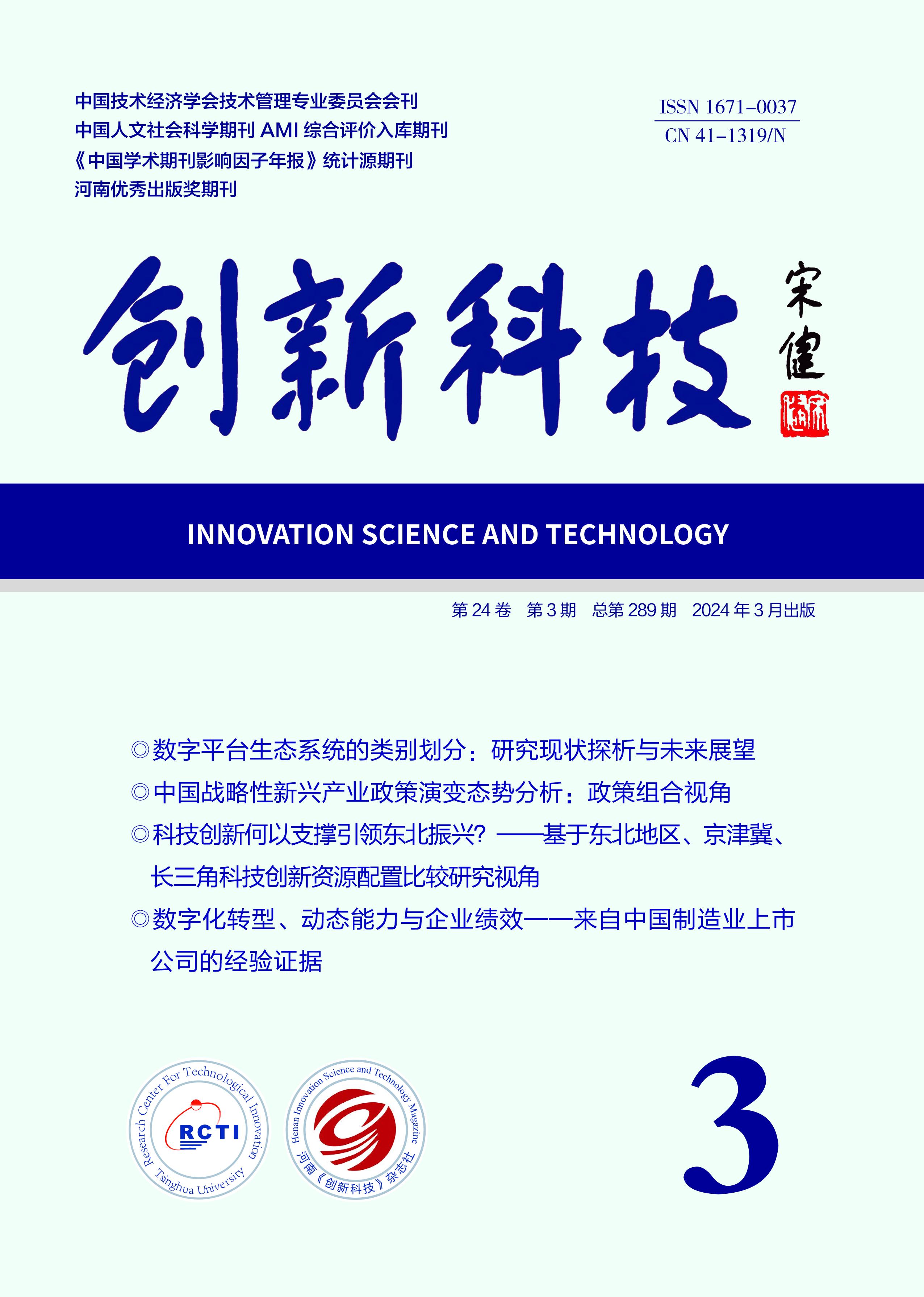INNOVATION SCIENCE AND TECHNOLOGY
Quick Search

All publication are peer-review
Peer review will take the from of double-blind review Judge objectively and impartially
There is no conflict of interest for the reviewer
Review articles shall be kept strictly confidential prior to publication
Science & Technology Strategy and Policy
A Comparative Study of Policies on the Transfer and Transforma⁃ tion of Scientific and Technological Achievements Between China and the United States from the Perspective of Institutions
Liu Shuai, Du Meiling
(School of Economics and Management, Shanxi Normal University, Taiyuan 030031, China)
Abstract: Since 2010, China's scientific and technological innovation capacity has improved significantly, with R&D investment and personnel scale ranking among the world's highest. How⁃ ever, the commercialization rate of scientific and technological achievements remains relatively low. Based on new institutional economics, this study develops a five-dimensional analytical framework—property rights, competition mechanism, incentive compatibility, institutional col⁃ laboration, and institutional environment—from the institutional arrangements and institutional environment. By overcoming the limits of single-perspective analysis, this research systemati⁃ cally compares the science and technology transfer policies between China and the United States, aiming to provide insights for optimizing relevant policies. Research findings show: ① China has challenges such as imprecise property rights attribution and cumbersome approval processes. While the U.S. Bayh-Dole Act has developed a clear property rights system, it has limitations, including high compliance costs and restrictions on international mobility. ② China's technology market has high entry barriers, excessive administrative intervention, and im⁃ perfect transaction rules. Although the U. S. has low entry barriers and transparent rules, it is prone to spawning "patent trolls", faces serious monopolization by tech giants, and presents "knowledge barriers" for SMEs. ③Chinese researchers receive a relatively low proportion of ben⁃ efits from commercialization. The evaluation system tends to be administrative-oriented and lacks risk tolerance mechanisms. In comparison, the U.S. features market-oriented benefit distri⁃ bution and performance-based evaluation; however, it suffers from high management costs and excessive emphasis on commercial value at the expense of social benefits. ④China's policy coor⁃ dination among departments is relatively fragmented, with frequent policy implementation adjust⁃ ments. On the other hand, the U.S. has a market-oriented policy system, but its decentralized decision-making policy framework suffers from a lack of unified coordination, serious institu⁃ tional fragmentation, and difficulties in addressing major technological challenges. ⑤ China lacks innovation ecosystems, including legal protection, technology markets, and financial sys⁃ tems. In contrast, while the U.S. possesses a comprehensive intellectual property framework and mature market systems, its overly complex legal system creates entry barriers, resulting in pro⁃ hibitively high litigation costs. Furthermore, the U.S. is overly dependent on global talent mobil⁃ ity. The differences in science and technology transfer policies between China and the United States stem from variations in strategic orientations, fundamental institutional environments, gov⁃ ernment role positioning, innovation ecosystems, historical and cultural factors, and development stages. To effectively improve China's science and technology transfer rate, this study recom⁃ mends: revising relevant laws to clarify property rights attribution and simplify approval pro⁃ cesses; implementing negative list management to lower market entry barriers; increasing the proportion of benefits for researchers and promoting diversified approaches such as equity incen⁃ tives; establishing inter-departmental coordination mechanisms and deepening industryacademia-research collaboration; improving the intellectual property legal system, cultivating technology markets and intermediary service systems, and optimizing the innovation ecosystem.
Key words: institutional perspective; policies for the transfer and transformation of scientific and technological achievements; comparison between China and the United States; tech market; intellectual property